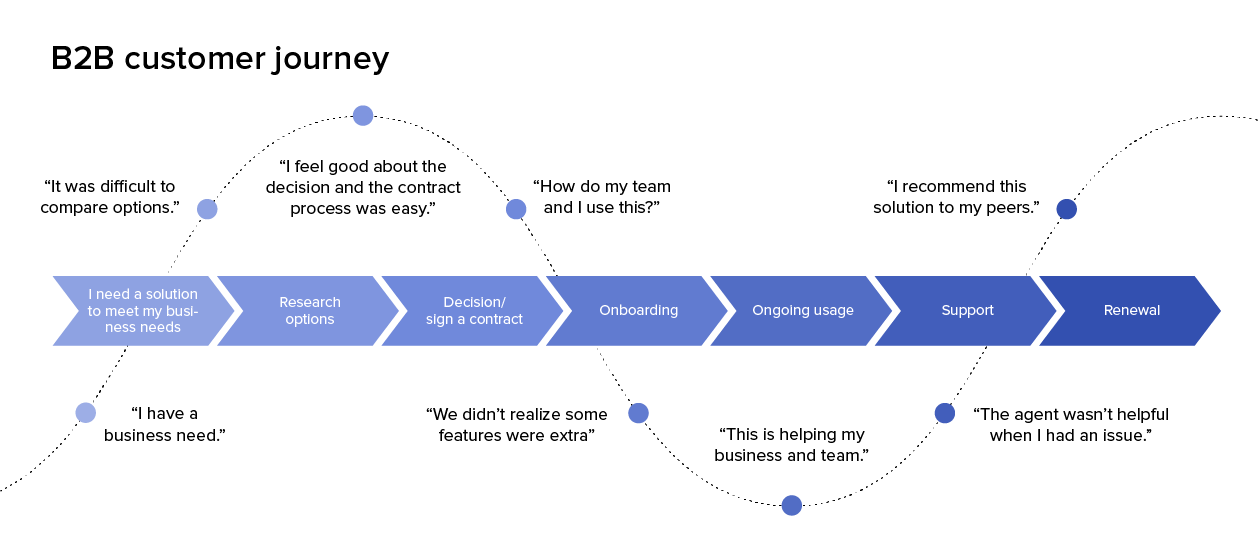Using Customer Journey Mapping to Enhance Case Studies in E-commerce
Meta Description: Explore how customer journey mapping can elevate your e-commerce case studies, driving engagement, customer loyalty, and trust in your brand.
In the competitive landscape of e-commerce, understanding the customer experience has become more vital than ever. As businesses strive to meet the evolving needs of their customers, leveraging tools like customer journey mapping can offer significant insights that enhance overall operations and success stories. This blog will delve into the art and science of customer journey mapping, its impact on case studies, and how e-commerce professionals can harness this tool to drive engagement and loyalty.
Meet Viktor Novak, a seasoned digital marketing strategist with over five years of experience in SEO and customer experience optimization. Throughout his career, Viktor has guided numerous e-commerce businesses to harness customer journey insights, resulting in improved customer engagement and increased sales.
Understanding Customer Journey Mapping
What is Customer Journey Mapping?
Customer journey mapping is a strategic method that visualizes the complete experience a customer goes through when interacting with a brand. This process captures every touchpoint, from the initial awareness of a product to the final purchase—and beyond. It involves creating a diagram or visual representation that highlights:
- Awareness: How customers become aware of a product or service.
- Consideration: The factors that influence their decision-making process.
- Purchase: The experience during checkout and payment.
- Post-Purchase: Customer satisfaction, support, and opportunities for repeat business.
By understanding these stages, businesses can better empathize with customers, identify pain points, and craft messages that resonate on a personal level.

Why Customer Journey Mapping Matters
The importance of customer journey mapping cannot be overstated. Research shows that 86% of buyers are willing to pay a premium for a great customer experience, according to a report from Forbes. Organizations that prioritize the customer journey see improved brand loyalty and increased profits.
Additionally, implementing effective customer journey mapping strategies has been shown to enhance customer retention rates. A study by Bain & Company revealed that a 5% rise in retention can lead to an increase in profits by anywhere between 25% to 95%.
The Connection Between Customer Journey Mapping and Case Studies
Why Enhance Case Studies?
Case studies serve as compelling narratives that showcase real-world successes and challenges faced by customers. By incorporating customer journey mapping, brands can provide a deeper understanding of how they navigated the customer experience, ultimately leading to greater trust and credibility.
Case studies that illustrate the use of customer journey mapping provide a more informative and engaging narrative for potential clients. When businesses present direct statistics or quotes from satisfied customers, they create a relatable vision that resonates with other prospective customers' needs.
Real-Life Examples
Amazon: Renowned for its customer-centric approach, Amazon utilizes customer journey mapping to optimize the shopping experience. Their case studies reflect success through improved user convenience and satisfaction, showcasing how meticulous attention to customer interactions translates to high retention.

Zappos: A leader in customer service, Zappos maps their customers' journeys to ensure seamless interactions. Utilizing customer feedback as part of their case studies, they highlight the dedication to enhancing the shopping experience, driving home the message of their industry-leading service.

Shopify Plus: Many brands leveraging e-commerce tools like Shopify Plus enhance their success stories via video case studies. These narratives effectively capture customer journeys, illustrating the benefits experienced by users and real customer interactions in action.
Implementing Customer Journey Mapping: A Step-by-Step Guide
Define Stages: Start by identifying the stages of the customer journey specific to your e-commerce business (awareness, consideration, purchase, post-purchase).
Create Personas: Develop customer personas that represent different segments within your target audience. Understanding their motivations and behaviors is key.
Identify Touchpoints: List all potential touchpoints along the journey, considering both physical and digital interactions.
Analyze Emotions: Gauge the emotional responses customers might feel at each stage and identify potential pain points.
Utilize Tools: Take advantage of tools like Lucidchart or Miro for creating visual maps. These platforms offer user-friendly interfaces for collaboration.
Gather Feedback: Implement a system for continuous customer feedback to iterate and improve the mapped journey over time.
Best Practices for Effective Journey Mapping
Establish Feedback Loops
Feedback loops are essential for maintaining an updated view of the customer journey. Collecting customer insights regularly ensures your mapping reflects their current experiences. Studies indicate organizations that integrate customer feedback into their mapping processes can significantly enhance customer service (user experience models have shown its effectiveness).
Cross-Departmental Collaboration
Engaging different departments—marketing, sales, and customer service—ensures all perspectives are considered when mapping the customer journey. This collaboration helps build a more comprehensive understanding and fosters synergies that enhance overall customer experience.
Prioritize Data-Driven Insights
Using analytics to grasp customer behavior is crucial. According to HubSpot, businesses leveraging data-driven marketing strategies are six times more likely to see profitability. Integrating analytics into customer journey mapping illuminates patterns and trends, allowing businesses to better cater to customer preferences.
Challenges and Solutions in Journey Mapping
Despite its benefits, many businesses encounter challenges when implementing customer journey mapping. Here are common pitfalls and actionable solutions:
Ignoring Updates: Businesses that neglect to regularly update their journey maps risk basing decisions on outdated information. Establish a routine review process to ensure relevancy.
Overlooking Data: Some organizations may fail to utilize customer data effectively, leading to incomplete mappings. Make a concerted effort to incorporate analytics into mapping processes.
Failure to Address Pain Points: If customer pain points are identified but not acted upon, businesses may disengage customers further. Regularly iterate on the mapping based on feedback and responses to ensure true customer-centricity.
Conclusion
Incorporating customer journey mapping into your case studies allows e-commerce businesses to create nuanced narratives that resonate with potential customers. By leveraging this powerful tool, companies can optimize their operations, enhance customer experiences, and drive loyalty.
Start mapping your customer journey today to unlock the potential for increased customer satisfaction and sales. By embracing this practice, you not only enhance your case studies but establish a solid foundation for ensuring each customer interaction builds long-term trust and engagement.
Explore more articles on improving your e-commerce strategies and stay ahead in the dynamic world of digital marketing!
